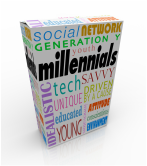|
Does Fintech + Insurtech = BancInsurTech It is surprising that while the two worlds of Fintech and Insurtech continue to explode, individually gaining billions of dollars of capital, there have been few, if any attempts to marry the Fintech and Insurtech worlds.
Many consider Insurtech a subset of Fintech but that does not change the fact that the solutions offered seem to develop separately; many having to do with banking ecommerce, loyalty, credit scoring, and lending on the Fintech side while Insurtech concentrates on P&C, Life and Health insurance. There are benefits to enhancing the customer experience of purchasing insurance through a financial institution; be it bank or credit union, if the two combine forces. When I first started leading bank insurance divisions many years ago, I had a vision -- to change the industry by inventing new ways of distributing insurance more easily and less expensively to consumers given the wealth of information that banks have about their clients. As the distribution of insurance through banks was in its infancy, we thought we would be able “tabula rasa” the distribution, be innovative and anticipate what the customer experience might look like. We decided that having total personalization and a holistic approach would be a step in the right direction. One of our first attempts was Elastic Band Bancassurance or Ebb. Ebb would allow the banking client, whether business or individual, to have on-demand life and P&C insurance exactly when they needed it, in the amount needed and only when desired. Ebb, of course, also refers to the flowing back of the tide from high to low water or the period in which this takes place, so we thought it an appropriate acronym for insurance that ebbs and flows based on changing circumstances.To read more, click here. Products, Portals and Platforms... Oh MY Similarly to the cowardly lion in the Wizard of Oz, Financial Institutions (FIs) need to muster their courage and design a Customer Experience (CX) that will keep pace with a new breed of cuonsumers; Gen X and Gen Y. Our perspective is that FIs have great bravado ( like the lion, ok you get the gist of this) when talking about the changes needed to better connect with, engage and drive stellar CX with GenXY, but it not happening quickly enough. The numbers tell the story. Some measures show banks achieving a per annual growth rate of 5-6% from 2010 to 2015 while insurance shows an anemic 3.1% growth rate annually. Asset management has an after-tax ROE of 7.7% which is still below other mature industries such as retailing at 13.1%. Do retailers have more courage than financial services companies or do they see the perils on the yellow brick road more clearly and act more quickly? To read more...
Millennials as Bank Brand Ambassadors? Just say yes and...! Every financial institution we speak with desires attracting more Millennials as clients. Based on primary research we conducted with Millennials in 2015, 55% are 'likely or more likely' to listen first to their friends and parents when making financial decisions. GenYs tend not to trust what the bank brand is telling them until they have experienced it themselves of have a peer recommendation. Ad blockers on phones and mobile devices mean that bank brand advertising is going to have to work harder or smarter to capture the ears, eyes and hearts of Millennials.
This is why a millennial bank brand ambassador program makes sense as 'ads are not ads' in the traditional sense but are people simply talking to other people using a language, pictures and videos that are natural and authentic to them. To get some insight into how these voluntary programs can work, click here. To Robo or not to Robo; that is the question Financial Institutors have a major opportunity to educate Millennials about financial instruments. Data from our initial primary Millennial research indicates that 41% of the participants ages 21-34 do not yet have an investment philosophy, 55% would be likely or more likely to listen to a bank or credit union advisor and 21% consider themselves moderate risk takers. To gauge the interest of our Millennial research participants about Robo advisors we asked them to rate four investment process options on a 5-point scale from 'not attractive to very attractive'. Check out their responses.
Holiday Hugs & 5 Trends Affecting Customer Experience
There is a retail clothing store I frequent in Fairfield County, called Mitchells. The owner, Jack Mitchell is the Chairman of five highly successful, family-owned clothing stores in Connecticut, New York and California. He has written a book call “Hug your Customer” and Jack’s methodology has been the subject of a Harvard Business School Case Study. Of course the “hug” is a metaphor and, in this third generation-owned store, it means “any large or small deed that genuinely shows you care.” However, that doesn’t stop Jack from also giving his well-known customers a real hug when he sees them. Jack has a winning formula that transcends the obvious customer support or service and creates a customer experience (CX). He is convinced that any and all types of businesses can profit by using the “hug” method. I have always been a big believer in looking at other industries to find more creative ways to work in financial services and stimulate your creative thinking, so reading Jack’s book did just that. Check out the 5 trends we see effecting Customer Experience in 2016 in the ninth edition. Millennials at the Gate; But How Do You Get Them In? As we continue our research into the Millennials psyche of investing their discretionary income and working with financial institutions for other services, we use cognitive sciences and neuropsychology to answer some basic questions. Will Millennials ever use traditional banks and credit union services the way Baby Boomers and the Silent Generation do? If we want to get them excited about doing so, what types of programs resonate with them? Knowing that mobile banking suits their lifestyle, do branches and face-to-face interactions have a place in investing, insurance, savings and daily financial transactions of this generation? Find out what our primary research on Millennials has taught us is true and the 5 steps we suggest financial institutions need to do, to “think, see and feel", as Millennials do NOW. Implementing these steps today means institutions will garner Millennials' transaction, wealth management, insurance and investments assets tomorrow. The following 5 steps are a part of a quality customer experience program that we have used for many years but it always helpful to revisit. Check out the eighth edition. That’s right, we decided to go to the source and ask Millennials to help design the types of investment products they are looking for and have them tell us what elements the product(s) should possess. This is an “outside in” view.
We started by surveying 50 Millennials from the ages of 21 – 34. Fifty-five percent were be- tween the ages of 21-29; and forty-five percent were between the ages of 30-34. Given this breakdown, not unexpectedly, the majority makes less than $100,000 in annual income; however 15% are above the $100,000 threshold, and 2% above $200,000. This of course does not include the money they will be inheriting in the near future from grandparents and parents; estimated at a colossal $30 trillion over the next 3 decades. A recent estimate by Forbes is that Millennials today “may control an estimated $2 trillion in liquid assets.” Participants represented a cross-section of the USA; with nine regions contributing. The Pacific region dominates with 26% of the participants. To find out more, come and check out the seventh edition. Creativity and Innovation — How You Can Get More of Both Creativity and innovation… Where do they come from? What is the difference between them? How can you develop these skills and utilize innovation and creativity in your business? Whether you are working in a Fortune 500 company or as a bootstrap entrepreneur, the spark of creativity is waiting to be ignited. I venture to say that creative power lurks in every individual in your organization and as a leader it is your job to unleash it. The problem occurs because most people need a process to connect with their powers of creativity and innovation and the process is not immediately obvious or accessible. To find out more, come and check out the sixth edition.
Managers and Millennials — Service I recently returned from visiting Barcelona, a city dedicated to tourists, great tapas and catering to an international clientele. In previous Intersections we have discussed the primary research we conducted on recruiting, training, retaining and growing the FIIS business and how Millennials (Gen Y) fit into our Industry and the work place. We were looking for practical insights that FIIS managers are using to close the intergenerational gaps between Baby Boomer (BB) GenX, Silent Generation (SG) and Millennials. For those of you that want our usual hard facts and data based on extensive research, stop reading right here. This is a purely anecdotal; however it has applicability to our Industry, promise! Come check out the fifth edition.
Managers and Millennials — The Growth Gap "I define myself by what I do after work as well as my work. When my company supports both my personal goals as well as my professional goals then they know me in a more holistic way and I feel connected to the company. " Millennial’s words when asked their views of growth goals.
In this segment of research, we asked Millennials to indicate what makes them want to support the growth goals of the company and what elements moved them to work harder. We spoke with sales representatives as well as advisors, operations and administration people. Remember that this is the generation that invented the selfie, so the managers that work well with Millennials find ways to celebrate the individual and do it in conjunction with the Company’s growth objectives. Come check out the fourth edition. |
|









 RSS Feed
RSS Feed